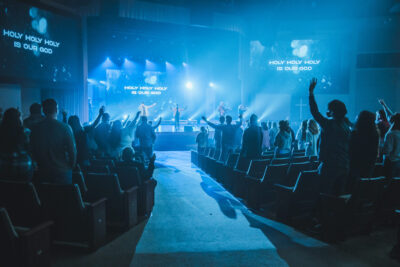
Church attendance is one of the most important metrics to pay attention to. But how do you get an accurate headcount without making it weird? You don’t want anyone to feel like they’re just a number, but you also want reliable data so you can see trends in church growth.
Here are five ways to measure church attendance:
1. Count the number of cars
Counting cars is a simple way to get a decent estimate of how many people show up on Sunday. This is especially easy if you have volunteers directing traffic in the parking lot. According to the Bureau of Transportation Statistics, recreational trips in the US (such as a drive to church) average 2.1 people per vehicle. After everyone shows up, count the number of cars in your parking lot and multiply it by 2.1.
2. Use a tally counter
You may remember these from your days of riding the school bus as a kid, but tally counters are an affordable way to count the number of people at your church without worrying about losing track. A mechanical tally counter is cheap, but an app is more discreet. Ideally, you’d use this in a way that people don’t notice (like with a greeter in the parking lot), so nobody feels like a number.
Keep in mind, tallying the number of attendees isn’t the only way to measure attendance, nor is it the only thing worth measuring at your church. As you brainstorm creative ways to keep track of growth and change at your church, discover what more you can be doing by downloading the free ebook, 5 Crucial Church metrics You’re Not Measuring, today.
3. Make a seat map
Creating a map of the seats in your sanctuary lets you send someone to mark which seats are empty or full instead of counting people. Then you can count the empty seats later. Assuming you have fewer empty seats than people, this saves you a lot of counting. Plus, to anyone watching, it looks like you’re finding open seats for anyone who comes in late. (Which is a good thing for a growing church to do, anyway!)
4. Get automated people counters
Automated counters use cameras to measure foot traffic in strategic locations. If you set one of these up at the main entrance to your building or the door to your sanctuary, you don’t have to have anyone physically count people, and you’ll probably wind up with more reliable data.
Some of these systems are pretty discreet, so depending on where you put it, people may not even notice it’s there.
5. Give every person a bulletin
If you print off 200 bulletins and hand out 127, it’s pretty safe to say you had at least 127 people in your service. Keep track of how many bulletins you print each weekend, then at the end of the service count how many you have left and subtract that from the number you printed. That’ll give you the number of people who attended. Not every person will take a bulletin, but you can always set one aside for every person who says they don’t want one. That way, you’ll still wind up with an accurate count.
Be Encouraged
Attendance can be a pain to deal with in a growing church. When your church was small, it was easy to do a quick, inconspicuous headcount every Sunday. But as you grow, you lose the luxury of being able to eyeball attendance. And that’s a great problem to have!
But you don’t have to reinvent the wheel. Using one of these methods, you can start reliably measuring the growth God is giving you.
Attendance is the most commonly tracked aspect of church life, however, there are other key metrics you should also be monitoring. Discover what metrics your church might be missing by downloading the free resource, 5 Crucial Church Metrics You’re Not Measuring, today. This ebook also talks through why you should be measuring certain things within your church and best practices for capturing those metrics.






